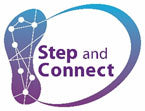Sit -to -stand transfers are important movements that physical therapists, occupational therapists, trainers, and coaches use every day with their clients. With professional guidance clients can successfully learn the symmetry of weight distribution and other mechanics required to correctly perform sit-to-stand. Without such guidance clients may not learn the safe and correct way to get up from a seated position or to use the movement as exercise. The result can be pain, falls and other injuries.
Feedback
Feedback regarding proper motor patterns is an important tool that can lead to greater movement efficiency, increased activity, and lower risk of injury. After analyzing the different phases of sit to stand (preparatory/ starting alignment, transitional movements, and the final standing posture), clinicians can use feedback to address both the spatial and temporal parameters of movement that is needed to improve overall performance.

Why we need Feedback?
A natural part of performing a skill is to use intrinsic feedback, the sensory perceptual information caused by-the movement. Vision, proprioception, touch, pressure, and audition help formulate a person’s internal representation of a movement goal.
When performing sit- to- stand, proprioceptors indicate the muscle length and tension of the position of the ankles and feet as well as the amount of pressure through the limbs; visual information orients the individual to the environment; and vestibular inputs contribute to sense of verticality. If your clients are not receiving the proper intrinsic feedback, they may not be aware of their movements. For example, an individual with impaired ankle proprioception may need extrinsic or augmented feedback to increase the weight and symmetry through their legs.
Augmented feedback enriches/ enhances intrinsic feedback . It provides information to clients who are unaware of their body position. Augmented feedback can help engage the patient during all phases of sit -to- stand and with different modalities: visual, auditory or tactile.
What type of Feedback to Use?
Auditory, Tactile, or Visual?
When training sit <>stand, what type of feedback and verbal cues would you provide to achieve forward weight shift, symmetry of weight distribution versus increasing speed of transfer?
Think about your clients who have trouble getting up from sitting and are not sure why they cannot rise on their first attempt. Often patients think the problem is lack of strength.
Sometimes using the cue “nose over toes” works for these patients. Other times, it is the size and timing of their forward weight shift that needs to be cued?
Auditory feedback provides an engaging solution in this situation. For example, the Step and Connect's Balance Matters System features auditory feedback about the timing and amount of weight the client shifts forward. The system's innovative foot pads make a clicking sound when the move is done correctly. The click is nonjudgmental and motivating. The client learns a new way to move without verbal instruction. With practice the correct move becomes automatic.
During sit to stand transfers auditory feedback can improve: 
- Starting alignment
- Forward weight shift
- Timing of weight shift
- Symmetry of weight distribution
- Postural control (decrease sway at the ankles)
Example using the Balance Matters system:
Sit to stand: Activate back clicker, activate front clicker while you stand, keep all clickers quiet during standing.
Stand to sit: Keep all clickers quiet until bottom is on the seat.
Progressions and intervention ideas:
-
Part Practice (only one phase of the transfer).
- Preparatory phase: Work on good starting posture, activating back clicker to promote anterior pelvic tilt and increased weight bearing through the legs.
- Transitional phase: Reach forward with arms and activate front clicker to promote anterior weight shift.
- Transitional phase for stand to sit: partial squats to sit down keeping clickers quiet to improve the timing of weight shift and decrease a “plop”.
- Symmetry of movement and weight-bearing
- Does one side activate sooner than another or do you not activate one clicker on one side since you are weight bearing more on the opposite side.
- Verbal cue: Hear the clicker go off at the same time standing up and sitting down.
- Activate the vestibular system standing on foam footpads
- Add head turns with sit to stand on foam
- Changing the Stance Position
- Staggered stance and step to work on step initiation.
-
Eyes closed to improve balance in dimly lit environments.
- This is important when standing up from bed to walk in order to go to the bathroom at night. An article “Effect of Sitting Pause Times on Balance After Supine to Standing Transfer in Dim Light” mentions that the risk of falling for older adults increases in dimly lit environments.
- The results of the study suggest that longer sitting pause times may improve adaptability to dimly lit environments, contributing to improved postural stability and reduced risk of fall in older adult women when getting out of bed at night.
- This is an important topic on how the speed or timing to adapt in different environments (dim lit or uneven surfaces) can change our overall balance and postural control and should be integrated into balance exercises and goals.

Using multi-sensory feedback using the Balance Matters system will:
- Improve an individual’s awareness of their starting posture and transitional postures.
- The auditory feedback in the footpads helps promote improved timing, sequence of the task, weight distribution for symmetry and weight shift.
Remember, there are influential factors when designing programs using feedback. Fading the feedback for retention is highly recommended. In our courses, we review more in depth these influential factors and clinical applications.
If you are interested in learning more, register for our new
Balance Matters Certification Level 1 Course.
The course will include more video examples, research and progressions and variations of exercises.
If you are interested in hosting a course and learning more techniques utilizing motor learning principles and feedback for sit to stand, gait, equilibrium strategies, and orientation in space please reach out to info@stepandconnect.com .
References:

Be the first to comment